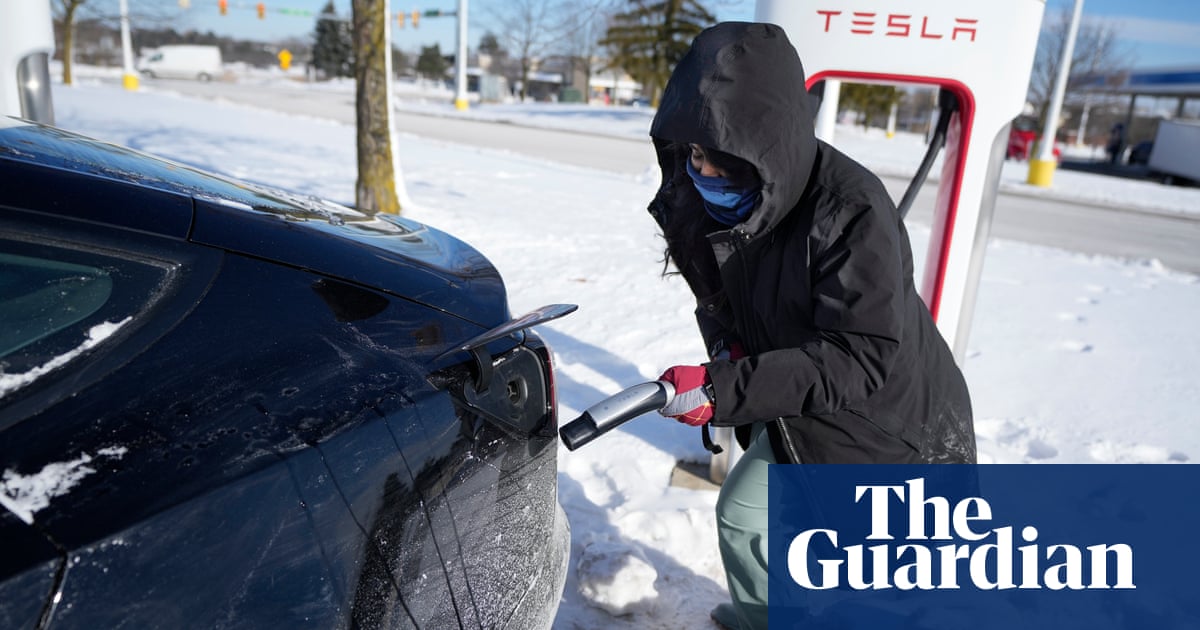Read More:
Why are Tesla’s batteries dying in the cold?
Winter weather poses a significant challenge for electric vehicles, and Tesla owners have been particularly affected by a puzzling issue – their batteries dying in the cold. While many EVs have been known to experience reduced range in low temperatures, Tesla’s battery performance seems to be affected more drastically. So, what exactly is causing this problem?
Battery chemistry and cold temperatures
One of the main reasons behind Tesla’s battery issues in the cold lies in its battery chemistry. Tesla’s vehicles use lithium-ion batteries, which have a lower tolerance for extreme temperatures compared to traditional internal combustion engines. When the temperature drops, the chemical reactions within the battery slow down, resulting in reduced battery efficiency.
Cold weather affects range and charging speed
In addition to reduced battery efficiency, cold weather also affects the range and charging speed of Tesla vehicles. When the temperature drops, the range of an electric vehicle decreases due to increased energy usage to power vehicle systems and maintain internal heating. Moreover, charging times can be significantly longer as the battery temperature needs to be raised before accepting a high-speed charge. These factors can contribute to the perception that Tesla batteries are “dying” in the cold.
Increased energy usage for battery heating
To combat the adverse effects of cold weather, Tesla vehicles employ energy-intensive methods to warm up their batteries. This energy usage for battery heating consumes additional power, further contributing to decreased range in cold temperatures. While this feature is crucial for ensuring battery performance and longevity, it also places an added burden on the vehicle’s electrical system.
Battery management system optimization challenge
Another aspect affecting Tesla’s battery performance in the cold is the complexity of managing and optimizing performance in varying weather conditions. Extreme cold requires sophisticated battery management systems to ensure optimal battery performance. Balancing factors such as battery temperature, power delivery, and energy efficiency in different weather conditions can prove challenging, and Tesla is continually working on refining their battery management systems to enhance cold weather performance.
Tips for Tesla owners in cold climates
If you happen to own a Tesla in a cold climate, here are a few helpful tips to maximize your battery’s performance:
Why are Tesla’s batteries dying in the cold?
Winter weather poses a significant challenge for electric vehicles, and Tesla owners have been particularly affected by a puzzling issue – their batteries dying in the cold. While many EVs have been known to experience reduced range in low temperatures, Tesla’s battery performance seems to be affected more drastically. So, what exactly is causing this problem?
Battery chemistry and cold temperatures
One of the main reasons behind Tesla’s battery issues in the cold lies in its battery chemistry. Tesla’s vehicles use lithium-ion batteries, which have a lower tolerance for extreme temperatures compared to traditional internal combustion engines. When the temperature drops, the chemical reactions within the battery slow down, resulting in reduced battery efficiency.
Cold weather affects range and charging speed
In addition to reduced battery efficiency, cold weather also affects the range and charging speed of Tesla vehicles. When the temperature drops, the range of an electric vehicle decreases due to increased energy usage to power vehicle systems and maintain internal heating. Moreover, charging times can be significantly longer as the battery temperature needs to be raised before accepting a high-speed charge. These factors can contribute to the perception that Tesla batteries are “dying” in the cold.
Increased energy usage for battery heating
To combat the adverse effects of cold weather, Tesla vehicles employ energy-intensive methods to warm up their batteries. This energy usage for battery heating consumes additional power, further contributing to decreased range in cold temperatures. While this feature is crucial for ensuring battery performance and longevity, it also places an added burden on the vehicle’s electrical system.
Battery management system optimization challenge
Another aspect affecting Tesla’s battery performance in the cold is the complexity of managing and optimizing performance in varying weather conditions. Extreme cold requires sophisticated battery management systems to ensure optimal battery performance. Balancing factors such as battery temperature, power delivery, and energy efficiency in different weather conditions can prove challenging, and Tesla is continually working on refining their battery management systems to enhance cold weather performance.
Tips for Tesla owners in cold climates
If you happen to own a Tesla in a cold climate, here are a few helpful tips to maximize your battery’s performance:
1. Precondition your vehicle: Use your Tesla’s remote app or scheduled charging to warm up your car’s battery and cabin before you start your journey. This will help improve range and reduce unnecessary energy consumption.
2. Park in a garage or use a heated charger: If possible, park your Tesla in a garage or use a charger with a built-in heating system. This will help maintain a slightly warmer battery temperature, ensuring better performance during cold weather.
3. Monitor battery level: Keep an eye on your battery level and plan your journeys accordingly. Cold weather can significantly reduce range, so having a buffer of extra charge is advisable.
By implementing these strategies, Tesla owners can mitigate the impact of cold weather on their vehicle’s battery performance and ensure a smoother driving experience during the winter months.
Why are Tesla’s batteries dying in the cold?
Winter weather poses a significant challenge for electric vehicles, and Tesla owners have been particularly affected by a puzzling issue – their batteries dying in the cold. While many EVs have been known to experience reduced range in low temperatures, Tesla’s battery performance seems to be affected more drastically. So, what exactly is causing this problem?
Battery chemistry and cold temperatures
One of the main reasons behind Tesla’s battery issues in the cold lies in its battery chemistry. Tesla’s vehicles use lithium-ion batteries, which have a lower tolerance for extreme temperatures compared to traditional internal combustion engines. When the temperature drops, the chemical reactions within the battery slow down, resulting in reduced battery efficiency.
Cold weather affects range and charging speed
In addition to reduced battery efficiency, cold weather also affects the range and charging speed of Tesla vehicles. When the temperature drops, the range of an electric vehicle decreases due to increased energy usage to power vehicle systems and maintain internal heating. Moreover, charging times can be significantly longer as the battery temperature needs to be raised before accepting a high-speed charge. These factors can contribute to the perception that Tesla batteries are “dying” in the cold.
Increased energy usage for battery heating
To combat the adverse effects of cold weather, Tesla vehicles employ energy-intensive methods to warm up their batteries. This energy usage for battery heating consumes additional power, further contributing to decreased range in cold temperatures. While this feature is crucial for ensuring battery performance and longevity, it also places an added burden on the vehicle’s electrical system.
Battery management system optimization challenge
Another aspect affecting Tesla’s battery performance in the cold is the complexity of managing and optimizing performance in varying weather conditions. Extreme cold requires sophisticated battery management systems to ensure optimal battery performance. Balancing factors such as battery temperature, power delivery, and energy efficiency in different weather conditions can prove challenging, and Tesla is continually working on refining their battery management systems to enhance cold weather performance.
Tips for Tesla owners in cold climates
If you happen to own a Tesla in a cold climate, here are a few helpful tips to maximize your battery’s performance:
1. Precondition your vehicle: Use your Tesla’s remote app or scheduled charging to warm up your car’s battery and cabin before you start your journey. This will help improve range and reduce unnecessary energy consumption.
2. Park in a garage or use a heated charger: If possible, park your Tesla in a garage or use a charger with a built-in heating system. This will help maintain a slightly warmer battery temperature, ensuring better performance during cold weather.
3. Monitor battery level: Keep an eye on your battery level and plan your journeys accordingly. Cold weather can significantly reduce range, so having a buffer of extra charge is advisable.
By implementing these strategies, Tesla owners can mitigate the impact of cold weather on their vehicle’s battery performance and ensure a smoother driving experience during the winter months.
Why are Tesla’s batteries dying in the cold?
Winter weather poses a significant challenge for electric vehicles, and Tesla owners have been particularly affected by a puzzling issue – their batteries dying in the cold. While many EVs have been known to experience reduced range in low temperatures, Tesla’s battery performance seems to be affected more drastically. So, what exactly is causing this problem?
Battery chemistry and cold temperatures
One of the main reasons behind Tesla’s battery issues in the cold lies in its battery chemistry. Tesla’s vehicles use lithium-ion batteries, which have a lower tolerance for extreme temperatures compared to traditional internal combustion engines. When the temperature drops, the chemical reactions within the battery slow down, resulting in reduced battery efficiency.
Cold weather affects range and charging speed
In addition to reduced battery efficiency, cold weather also affects the range and charging speed of Tesla vehicles. When the temperature drops, the range of an electric vehicle decreases due to increased energy usage to power vehicle systems and maintain internal heating. Moreover, charging times can be significantly longer as the battery temperature needs to be raised before accepting a high-speed charge. These factors can contribute to the perception that Tesla batteries are “dying” in the cold.
Increased energy usage for battery heating
To combat the adverse effects of cold weather, Tesla vehicles employ energy-intensive methods to warm up their batteries. This energy usage for battery heating consumes additional power, further contributing to decreased range in cold temperatures. While this feature is crucial for ensuring battery performance and longevity, it also places an added burden on the vehicle’s electrical system.
Battery management system optimization challenge
Another aspect affecting Tesla’s battery performance in the cold is the complexity of managing and optimizing performance in varying weather conditions. Extreme cold requires sophisticated battery management systems to ensure optimal battery performance. Balancing factors such as battery temperature, power delivery, and energy efficiency in different weather conditions can prove challenging, and Tesla is continually working on refining their battery management systems to enhance cold weather performance.
Tips for Tesla owners in cold climates
If you happen to own a Tesla in a cold climate, here are a few helpful tips to maximize your battery’s performance:
1. Precondition your vehicle: Use your Tesla’s remote app or scheduled charging to warm up your car’s battery and cabin before you start your journey. This will help improve range and reduce unnecessary energy consumption.
2. Park in a garage or use a heated charger: If possible, park your Tesla in a garage or use a charger with a built-in heating system. This will help maintain a slightly warmer battery temperature, ensuring better performance during cold weather.
3. Monitor battery level: Keep an eye on your battery level and plan your journeys accordingly. Cold weather can significantly reduce range, so having a buffer of extra charge is advisable.
By implementing these strategies, Tesla owners can mitigate the impact of cold weather on their vehicle’s battery performance and ensure a smoother driving experience during the winter months.
By implementing these strategies, Tesla owners can mitigate the impact of cold weather on their vehicle’s battery performance and ensure a smoother driving experience during the winter months.

Read More:
- Sweeping public safety bill in D.C. aims to increase security, undoing past changes
- Get Ready for Enchanting Adventures in Season 4 with Witch Doctor
- Talk therapy shown to be effective in addressing psychological factors contributing to back pain
- Microsoft eliminates Android app integration on Windows 11
- Seven Years Later: Racing Game Enjoys Explosive Success on Steam Thanks to Epic Sale











+ There are no comments
Add yours